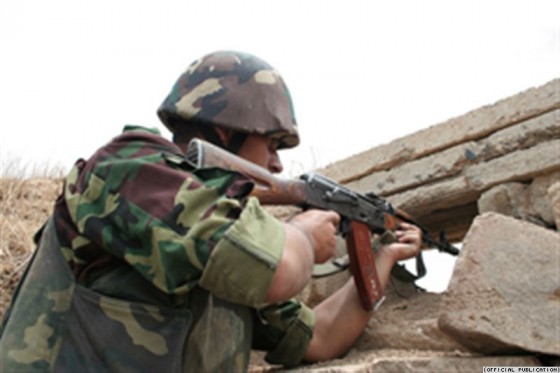
Over the past 24 hours, Armenian military, using mortars and large-caliber machine guns, 167 times violated ceasefire on various parts of contact line of Azerbaijani and Armenian troops, the Azerbaijani defense ministry told Trend August 20.
Armenians, stationed in the villages of Barekamavan, Dovekh of the Noyemberyan district, Paravakar and the nameless heights of the Ijevan district of Armenia, opened fire at Azerbaijani army positions in the villages of Qaymaqli, Kemerli and the nameless heights of the Gazakh district, Kohneqishlaq of the Agstafa district.
Armenians, stationed in the village of Chinari of the Berd district of Armenia, opened fire at Azerbaijani army positions in the village of Kokhanebi of the Tovuz district.
Armenians, stationed in the nameless heights and the village of Chil of the Krasnoselsk district of Armenia, opened fire at Azerbaijani army positions in the nameless heights of the Gadabay district.
Azerbaijani positions were also fired at by Armenians stationed near the villages of Tapqaraqoyunlu, Gulustan of the Goranboy district, Chilyaburt, Gizil Oba, Yarimja, Qoyarkh of the Tartar district, Kengerli, Novruzlu, Nemirli, Yusifjanli, Garagashli, Merzili, Shuraabad of the Aghdam district, Gorgan, Ashagi Seyidahmadli, Ashagi Abdurrakhmanli of the Fizuli district and Mehdili of the Jabrail district.
Armenians also opened fire from positions on nameless heights in the Goygol, Goranboy, Khojavand, Fuzuli and Jabrail districts.
The opposing side was silenced with return fire.
The conflict between the two South Caucasus countries began in 1988 when Armenia made territorial claims against Azerbaijan. As a result of the ensuing war, in 1992 Armenian armed forces occupied 20 percent of Azerbaijan, including the Nagorno-Karabakh region and seven surrounding districts.
The two countries signed a ceasefire agreement in 1994. The co-chairs of the OSCE Minsk Group, Russia, France and the US are currently holding peace negotiations. Armenia has not yet implemented the UN Security Council’s four resolutions on the liberation of the Nagorno-Karabakh and the surrounding regions.
Trend
